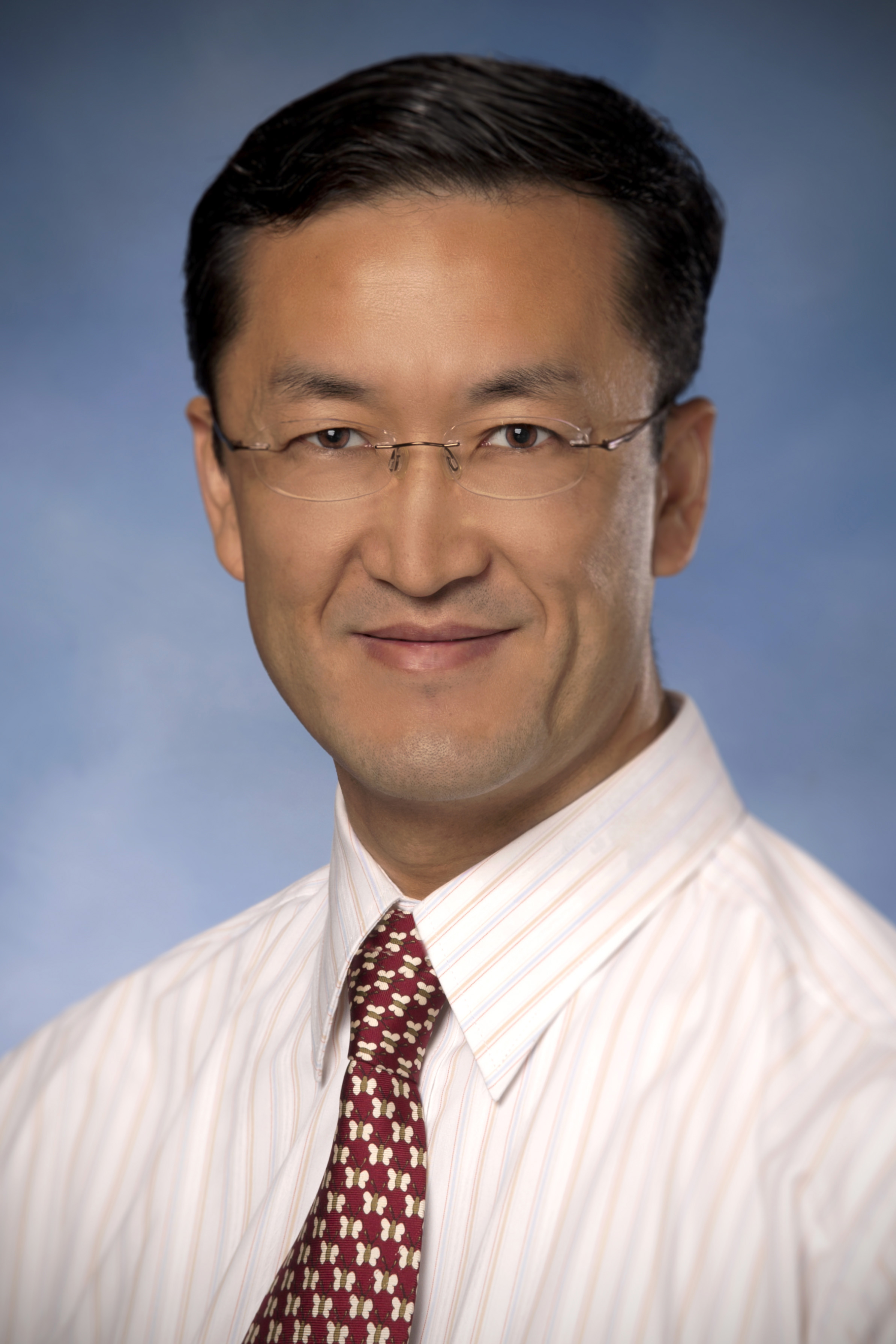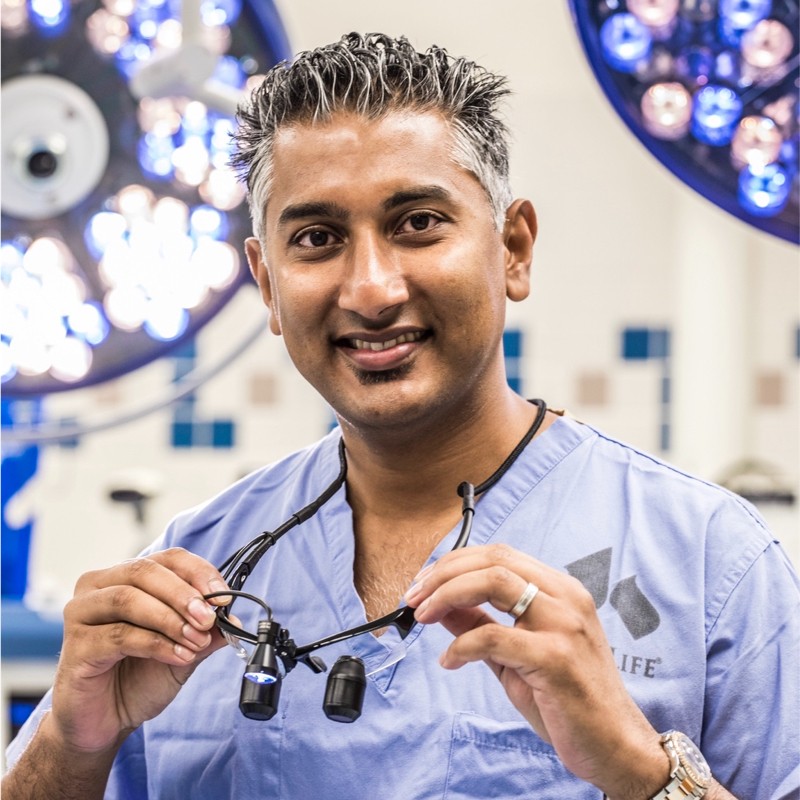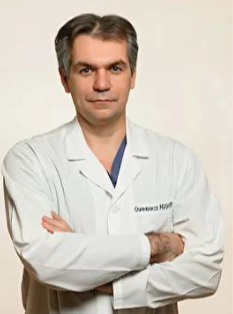Renowned Speakers
We’ve invited the top most influential speakers from around the world to give inspirational talks and lead practical workshops.

Dr.Li-ping Wu
Jiangmen Central Hospital (The Affiliated Jiangmen Hospital of SUN YAT-SEN University), Jiangmen city, Guangdong Province, P,R,China China

Dr. Srinivas Yeggana
MBBS, DNB.Ortho, MNAMS, FIJR ( UK) Managing Director & CEO AIMS Hospitals, Mancherial. India

Kamal R. Woods
Board Certified Neurosurgeon, Minimally Invasive Spine Surgeon, President & Co-Founder of Vertrae, Inc. USA

Paulo V Gil Alabarse
VA San Diego Healthcare System, Veteran Medical Research Foundation, San Diego, CA 92161 USA
Conference Information
welcome message
Orthopedics 2022 welcomes all the great scientists, young researchers, aid business, business delegates, academicians, to attend the“3rd International Conference on Orthopedics” scheduled during Dec 05-06, 2022 at Dubai, UAE.
Pulsus take a great pride in welcoming all attendees of the conference on Orthopedics. This conference will bring the Orthopedic community together from surgeons to researchers and the medical devices and tools industries to share their knowledge on this field. Pulsus take this opportunity to design a great platform for accomplishing innovations, technical advancements and development in the field of Orthopedics.
Orthopedics 2022 is a collection of comprehensive lectures, symposia, workshops, scientific sessions, oral and poster sessions. Orthopedics 2022 needs an expert readiness of these specialized during this field to explore the integrity-preserving problems which will foster growth in dignity and transcendence.
It is an honour to invite all concerned people to go along with us at our occasion and create it useful by your support. Orthopedics 2022 will probably convey an unpredictable program that portrays the advancements and techniques.


About the conference
Orthopedics 2022 is an International gathering organized by Pulsus, that unites all the innovators to glaze the entire field of Orthopedics and to experience the advancements in the research and development in the field of Orthopedics, OrthopedicSurgery, Podiatry, Arthritis, Rheumatology, SportMedicine, Pediatric Orthopedics and Trauma, Bonehealth and many more. The main theme of the conference is “Exploring the future aspects in the field of orthopaedics”
It is the platform for all the scholars, researchers, scientist, organizations, and industries to exhibit the recent advancements in diagnosis, treatment, and postoperative managements of Osteoporosis. The event comprises the various aspects of osteoporosis with discussion on causes and types of Osteoporosis with their Rehabilitation methods. The new emerging prosthesis with applied technologies of Biomaterials, Nanotechnology, Ayurveda, and Tissue engineering in Orthopedics are comprised in the conference.
Benefits of the conference:
This conference will provide advancement in the field of Orthopedics , this is the misted opportunity to know the recent research and developments in orthopaedics.
The conference comprises of eminent speakers with their recent frame work on this field along with their presentation and discussion.
The most recent and current updates in Orthopedics and Osteoporosis are the major sign of this conference.
Orthopedics 2022 provides wide range of exposure to various fields related to Orthopedics such as Orthopedics Surgery, Podiatry, Foot-care, Hand-care, Arthritis, Musculoskeletal disorder, Rheumatology, Sport-Medicine, Paediatric Orthopedics, Orthopedics & Trauma, Bone health and many more.
The young researchers and the student will be given the chance to grab their Best Poster Award by showing their work at Orthopedics Conference as a poster presentation and Young Researcher Forum.
Target Audience:
- Surgeons
- Health-care Analysts
- Students and Interns
- Research Faculties
- Doctors and Nurses
- Presidents & Vice Presidents
- Scientists and Professors
- Academic Scientists
- Medical Colleges, Universities
- Societies & Associations
- Business Entrepreneurs
- Training Institutes
- Medical Devices manufacturing Companies
- Pharmaceutical companies
Scientific Sessions
A branch of medicine focused on the correction or prevention of skeleton and associated structures deformity, diseases, or injuries (such as tendons and ligaments). Orthopedics is concerned with the surgical and non-surgical treatment of musculoskeletal problems. These disorders can arise from birth or as a result of physical trauma.
Orthopedics now cares for patients of all ages, from newborns with clubfeet, to young athletes requiring arthroscopic surgery, to older people with arthritis. The physicians who specialize in this area are called Orthopedics surgeons or Orthopedists.
-
Upper extremity and hand
-
Paediatric Orthopedics
-
Orthopaedic oncology
-
Dermatology in Orthopedics
-
Shoulder and elbow
Worldwide, millions of people suffer from inflammatory and degenerative conditions of the bones and joints. In wealthy countries, they make up half of all chronic disorders affecting adults over 50. Additionally, it is anticipated that by 2020, the proportion of people over 50 affected by bone illnesses would double.
Surgery is frequently necessary for many disorders, including total joint replacement when the natural joint has degenerated. Additionally, countless bone fractures, back discomfort, osteoporosis, scoliosis, and other musculoskeletal issues must be treated with permanent, temporary, or biodegradable prostheses.
Orthopedic biomaterials are therefore intended to be implanted in the human body as components of devices that are supposed to fulfill certain biological activities by replacing or mending various tissues like bone, cartilage, ligaments, and tendons, and even by assisting bone repair when necessary.
The most often used first-generation ceramic biomaterials are alumina, zirconia, and various porous ceramics. There are only a few formulas available for these non-metallic inorganic compounds.
-
Ceramic materials
-
Ceramic implants
-
Ceramics in orthopedic surgery
-
joint replacement using ceramic implants
-
Polymers
-
Orthopedics Biomechanics
-
Arthroplasty
-
Total wrist arthroplasty
This system consists of bones, muscles cartilages and connective tissues which helps to maintain posture and in moving. This system undergoes many changes as we grow old.
The musculoskeletal system can be affected by a variety of illnesses and conditions. Pain and limited mobility can be caused by ageing, traumas, congenital anomalies (birth defects), and disease.
-
Collagen
-
Fibers
-
Ligaments
-
Movements
-
Blood circulation
In Orthopedics medicine, orthopedic trauma is categorized as a severe injury to the elements of the musculoskeletal system. Trauma injuries are frequently the consequence of an unexpected mishap, such as a fall, that necessitates quick medical attention.
An injury can be trivial, such as cutting a finger when opening a metal can or fracturing a bone while participating in sports. While these can be painful or uncomfortable, once the injury has been treated by a GP, health clinic, or emergency department, the person will usually be allowed to return home.
Trauma standards were originally established in the United States in 1976, and a sophisticated trauma network today serves us all, no matter where we live, work, or travel.
-
Fractures
-
Dislocations
-
Epiphysial injuries
-
Nerve injuries
-
Traumatic Brain Injuries
The most common type of arthritis, osteoarthritis, affects millions of individuals worldwide. Degenerative joint disease is often known as "wear and tear" arthritis. The hands, hips, and knees are the most typically affected areas. The cartilage in a joint begins to break down, and the underlying bone changes as a result of Osteoarthritis. OA indications and symptoms include Swelling, stiffness, decreased range of motion (or flexibility), and pain or discomfort. Because there is no cure for OA, doctors usually treat the symptoms with a mix of treatments, which may include, Physical activity should be increased, weight-loss medications, including over-the-counter and prescription pain relievers
-
Rheumatoid Arthritis
-
Psoriatic Arthritis
-
Deformity and loss of function
-
Spondylarthritis
-
Acute inflammatory Arthritis
-
Inflammatory Arthritis
-
Septic Arthritis
-
Metabolic Arthritis
-
Infectious Arthritis
Musculoskeletal disorders can be managed without surgery. As part of a treatment strategy, orthopedic surgeons may recommend medicine, exercise, rehabilitation, or other therapies. If nonsurgical treatment is ineffective, the surgeon may suggest surgery.
Surgical procedure- An orthopedic surgeon can perform a number of different procedures. Arthroscopy, joint replacement, fusion, osteotomy, and internal fixation are some of the most common methods.
-
ACL Reconstruction Surgery
-
Ankle Repair and Spinal Surgeries
-
Limb reconstruction surgery
-
Orthopedics Medical Devices
-
Orthopedics: Diagnostic Techniques
Knee replacement, commonly known as complete knee replacement or knee arthroplasty, is a surgical technique used to resurface a knee that has been damaged by arthritis. The extremities of the bones that make up the knee joint, as well as the kneecap, are covered in metal and plastic pieces. Someone with severe arthritis or a major knee injury may benefit from this procedure. In 2017, more than 754,000 knee replacements were performed in the United States, according to the Agency for Healthcare Research and Quality.
-
Knee and hip flexion/extension
-
Rheumatoid arthritis
-
Surgical Techniques for Knee Replacement
-
Inflammatory arthritis
-
Fracture Repair
-
Kneecap Removal
A hip replacement involves removing and replacing portions of the pelvis and femur (thigh bone), which together make up your hip joint. It is typically used to treat hip arthritis-related stiffness and discomfort.
This procedure is occasionally used to treat a variety of diseases as well as traumas like a broken bone or a hip that is growing improperly.
A healthy hip has cartilage covering the ball and socket to aid in their easy movement together. The bones scrape against one another and become rough if this cartilage becomes worn or injured. Osteoarthritis is a disorder that limits motion and produces pain. Walking or even getting in and out of a chair can be uncomfortable when you have an arthritic hip. If hip arthritis has been identified, surgery might not be necessary. Physical therapy or nonsteroidal anti-inflammatory medicines (NSAIDs) may offer relief. But if these measures are ineffective in alleviating your problems, you should see an Orthopedic physician.
-
Total hip replacement
-
Hip Preservation Surgery
-
Hip resurfacing
-
Partial hip replacement
Knee preservation Arthroscopy:
A variety of keyhole operations known as knee preservation arthroscopy (KPA) are used to repair structural knee injury as soon as it occurs.
"You should be on the lookout for emerging problems like ligament injuries, cartilage damage, and meniscus tears if you're young and active and put a lot of stress on your joints owing to your lifestyle or activities," advises Dr. Tan.
If you have these issues, you may opt to undergo KPA, in which case a quick keyhole treatment can stop the conditions from getting worse and require extensive knee replacement surgery down the road.
Preventing irreversible knee deterioration that would necessitate complete knee replacement is the aim of knee preservation, especially in younger patients.
-
Osteoporosis
-
Osteoarthritis
-
Minimally invasive surgery
-
Ligament tears
-
Ligament reconstruction
Surgery may be used to treat a number of foot and ankle disorders. Foot and ankle surgery is typically chosen only after nonsurgical procedures have failed to produce the intended results. Certain situations, particularly acute injuries like ankle fractures, may, nevertheless, necessitate emergency surgery.
There are a variety of surgical techniques available to treat foot and ankle problems. The operation may be performed to align broken bones, fuse uncomfortable joints, remove overgrowth tissue, or repair a torn ligament or tendon, depending on the nature of the problem. Total ankle replacement may be recommended in cases of extensive damage and considerable pain in the ankle joint.
-
Bunions
-
Hammer toes
-
Metatarsal
-
Morton’s neuroma
-
Plantar fasciitis
-
Achilles tendon disorders
Pediatric orthopaedics is a medical specialty that focuses on the treatment of children's joints, muscles, and bones. A paediatric orthopedist is a clinician who specialises in treating those regions in children of all ages, from new-borns to teenagers. Pediatric orthopedists (also known as paediatric orthopaedic surgeons) can conduct surgery, if necessary, but they can also provide non-surgical therapies such as casts or limb braces. Because children's bodies are still developing, their joint, muscle, and bone makeup differs significantly from that of adults. If problems emerge, children's paediatricians will usually refer them to a pediatric orthopedist.
-
Pediatric allergy and immunology
-
Pediatric critical care
-
Neurocritical care
-
Pediatric infectious disease
-
Pediatric nephrology
The study of mechanical systems in the body to aid in the prevention and treatment of musculoskeletal problems is known as orthopaedic biomechanics. It covers topics like as improving knee replacement technology, assessing the effects of car accidents on the human body, and tracking bone injuries in athletes. Nickel, cobalt, chromium, molybdenum, zirconium, and titanium are among the metals used in medical implants. Hypersensitivity to pacemakers or other cardiovascular devices, dental implants, and orthopaedic hardware are all examples of immune responses to medical implants. Metal has been utilised widely in the production of orthopaedic implants in a variety of shapes.
-
Joint replacement prostheses
-
Fracture fixation devices
-
Pain-relief stimulators
-
Prosthetic implants.
-
Cervical Lordosis
Arthroplasty is a type of orthopedic surgery in which the articular surface of a musculoskeletal joint is replaced, modified, or realigned using osteotomy or another method. It is a non-surgical therapy used to reduce pain and restore function to a joint that has been damaged by arthritis or other types of trauma.
Engineers and surgeons face a variety of obstacles when doing arthroplasty. The chosen prosthesis must be harmless while also being resistant, compatible, and long-lasting. If all of these conditions are met, the prosthesis is unlikely to last more than 10–20 years. Artificial knees will last for 20 years in 75% of cases and 10 years in 90% of cases.
-
Osteoarthritis (OA)
-
Rheumatoid arthritis (RA)
-
Congenital dislocation of the hip joint (CDH)
-
Acetabular dysplasia
Shoulder Arthroplasty (TSA) is a surgical procedure that reconstructs the glenohumeral joint, which includes both the upper edge of the humerus and the glenoid. While shoulder joint replacement is less common than knee or hip replacement, it is just as effective at relieving joint pain.
Each year, approximately 53,000 people in the United States undergo shoulder replacement surgery, according to the Agency for Healthcare Research and Quality. In contrast, nearly 900,000 Americans undergo knee and hip replacement surgery each year. It primarily affects people over the age of 50, but it can also affect younger people.
-
Total shoulder arthroplasty (TSA)
-
A reverse total shoulder arthroplasty (rTSA)
-
Shoulder Arthroplasty in fractures
-
Hemiarthroplasty
Spinal surgery is used to treat pain-causing diseases in the spine. Back surgery is performed to relieve the discomfort and/or numbness that commonly radiates to other parts of the back, arms, and legs. A compressed nerve in the back or spine is the most common cause of pain
-
Lumbar Discectomy
-
Herniated Disc Surgery
-
Spinal Fusion Surgery
-
Spinal deformity
-
Spinal fractures
Orthomolecular medicinal drug is a shape of opportunity medicinal drug that pursuits to preserve human fitness via dietary supplementation. The idea builds at the concept of a most advantageous dietary surroundings within side the frame and indicates that illnesses mirror deficiencies on these surroundings. Treatment for disease, in line with this view, includes tries to correct "imbalances or deficiencies primarily based totally on person biochemistry" with the aid of using use of materials which includes vitamins, minerals, amino acids, hint factors and fatty acids. The ideas of orthomolecular medicine aren't supported by strong clinical evidence, and the treatment isn't effective.
-
Food faddism
-
Biomedical deficiency
-
orthomolecular therapy
-
Mega vitamin therapy
-
Metabolism
Physiotherapy enables in re-setting up everyday frame paintings and retaining incapacity rising from infection, harm or damage. The calling helps development and inspire recuperation, empowering people to stay in paintings whilst assisting them to live unfastened for something period of time that conceivable. Physiotherapists assist people prompted with the aid of using damage, infection or disability via improvement and exercise, guide treatment, instruction, and guidance. They hold up health for people of any age, assisting sufferers to supervise torment and keep away from sickness.
Physiotherapists make use of exercise initiatives to decorate portability and reinforce muscles, joint manipulate and activation to decrease anguish and firmness, muscle re-education to decorate manipulate aviation direction leeway structures and respiration activities, sensitive tissue preparation, needle therapy, hydrotherapy.
-
Cardiovascular Physiotherapy
-
Pulmonary physiotherapy
-
Community Physiotherapy
-
Neuro Physiotherapy
Anterior longitudinal ligament:
The anterior longitudinal ligament is a flat, strong band that runs along the anterior surface of vertebral bodies from the second cervical vertebra (axis) to the sacrum. The thoracic region is the thickest. The posterior longitudinal ligament runs from the axis to the sacrum along the posterior surface of the vertebral bodies, and is continuous as membrane tectoria. When these ligaments ossify or calcify, the normal alignment of the vertebrae is disrupted, resulting in a change in posture and gait.
-
Diffuse idiopathic skeletal hyperostosis (DISH)
-
Lumbar vertebrae
-
Spondylosis
-
Cervical vertebrae
The diagnosis and treatment of malignant illnesses of the musculoskeletal system are the focus of orthopedic oncology. Orthopedic oncologists deal with issues like: Primary malignancies of the bones, Sarcomas of soft tissue, Cancers that have migrated to the bones, such as breast, colon, or prostate cancers.
Treatments and therapy for bone cancer and sarcoma may need to be combined. To remove malignancies or restore bones, an orthopedic oncologist may use specialised techniques. These treatments and therapies are also intended to aid in the restoration of limb movement, improved function, and pain management.
-
Amputation
-
Hip replacement
-
Kyphoplasty/vertebroplasty
-
Limb salvage surgery
-
Palliative surgery
Hand infections can reason intense troubles that continue even after the infection has settled, for example, firmness, lack of quality, and lack of tissues, for example, skin, nerve, and bone. Hence, early, and forceful remedy of illnesses is essential. At the factor whilst visible early, some varieties of ailment may be dealt with with anti-contamination sellers and neighbourhood relaxation and splashing.
In any case, several contaminations begin to reason critical troubles, following an afternoon or two, if now no longer dealt with with anti-contamination sellers, surgical waste, and expulsion of tainted tissues. Occasionally, a hand infection may be prompted with the aid of using an "unusual mycobacterium." One of the extra standard sorts, Mycobacterium marinum ailment.
-
Wound dressing
-
Medication
-
Mobility
-
Pain medication
-
Post-Surgery Exercises
Sports medicine, often known as sports and exercise medicine (SEM), is concerned with physical fitness, injury treatment, and prevention. Sports medicine tries to keep people safe while they train for their goals.
Sports medicine professionals address a wide range of physical ailments, including fractures, sprains, strains, and dislocations. They also treat tendinitis, degenerative illnesses, and overtraining syndrome, as well as other chronic overuse problems.
-
Anterior Cruciate Ligament (ACL) Sprains
-
Anterior Cruciate Ligament (ACL) Tears
-
Shin Splints
-
Biomechanics
-
Sports nutrition
Orthopaedic surgeons successfully treat millions of patients each year through operative and nonoperative procedures. However, self-reported disability and pain intensity vary greatly among patients undergoing similar treatments or surgical procedures, with only weak correlations between objective data from radiographs or physical exams and patient self-report.
In patients with a variety of musculoskeletal illness concerns, psychological factors such as depression symptoms, health anxiety, or catastrophic thinking are consistently associated with disability and pain intensity.
Suicide and depression have recently emerged as major concerns among orthopaedic surgeons. Previous research has suggested that orthopaedic surgeons have the highest suicide rate of any surgical specialty. Researchers wanted to find out what factors are linked to depression and suicidal ideation (SI) in orthopaedics, including subspecialties.
Physicians are healers who are attempting to heal themselves. Every year, 300 to 400 physicians commit suicide in the United States, and the numbers are increasing.
-
Biopsychosocial model
-
Psychological treatment,
-
Surgeons
Impact of Covid 19 (Orthopedics):
The COVID-19 outbreak had a tremendous impact on orthopedic doctors and residents, who are the foundation of any department or institution. Because normal treatments are being rescheduled or postponed because to the COVID 19 epidemic, orthopedic trainees are not getting enough surgical exposure and hands-on training. Because they are not emergencies, most orthopedic specialist surgeries, such as joint replacement, arthroscopy, and sports injury surgery, as well as elective spine and deformity correction surgeries, are postponed or cancelled.
The global Orthopedics joint replacement market was valued at USD 20.00 billion in 2019 and is expected to grow to USD 26.89 billion by 2027, at a 7.6 percent CAGR during the forecast period.
As per the National Osteoporosis Foundation, in 2020, nearly 54 Mn people were affected by osteoporosis and low bone mass. This number included individuals of age 50 years and above. It was further estimated for this number to increase to 64.4 Mn by 2030.
Furthermore, the United Nations Department of Economic and Social Affairs has estimated an increase in the aged population of 60 years and above to be nearly 21% of the world population by 2050.
Market Analysis
Orthopedics is the musculoskeletal framework including the spine, bones, joints, tendons, ligaments, muscles, and nerves. The global Orthopedics market valued at $50 billion in 2018 and it has been driven primarily by the growth of aging population. According to global data analytics the market is set to grow to $ 65 billion in 2024. The global market for rheumatoid arthritis to grow at a CAGR of around 3% in the coming days. A new report published by in July 2016 forecasts that overall sales of drugs for rheumatoid arthritis will generate revenue of $34.6bn in 2020. The arcade for Rheumatoid Arthritis therapeutics is anticipated to upsurge from $56.6 billion in 2013 to $80.7 billion in 2020, at a Compound Annual Growth Rate (CAGR) of 5.2%. The global orthopedics market consists of several devices, that includes bone cement, surgical power tools, joint replacement implants and prosthetic limbs, Orthotic devices. The largest market segments were spine devices, hip and knee reconstruction implants, and trauma fixation. The market segment expected to undergo the fastest growth is extremity implants, this segment covers reconstructive implants for the small joints, ankle, digits, elbow, shoulder, and growth in this area is powered by the increasing awareness of patients, small joint implant options, and technological innovations contributing to more advanced implant designs.
Scientific Programme
















